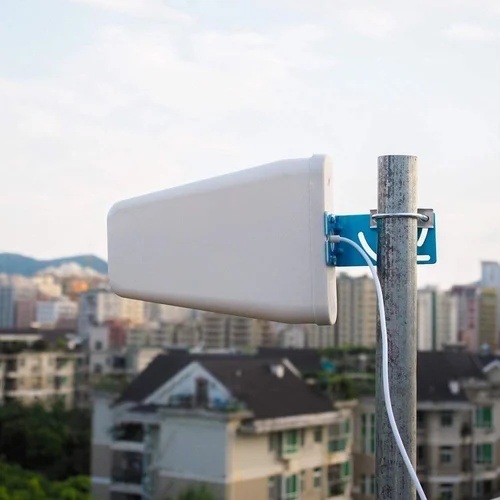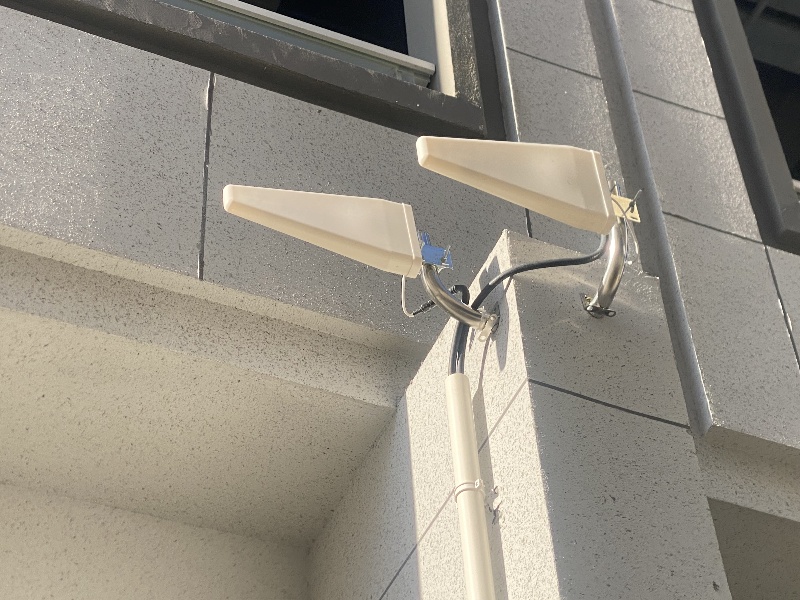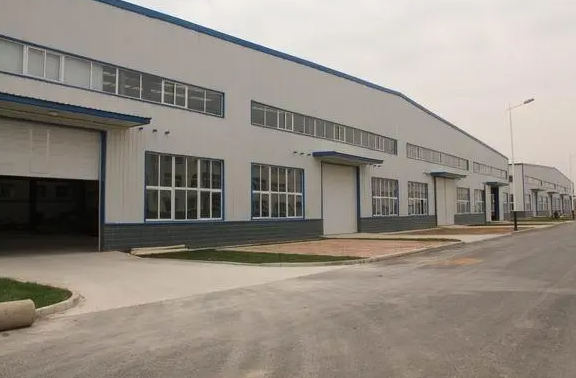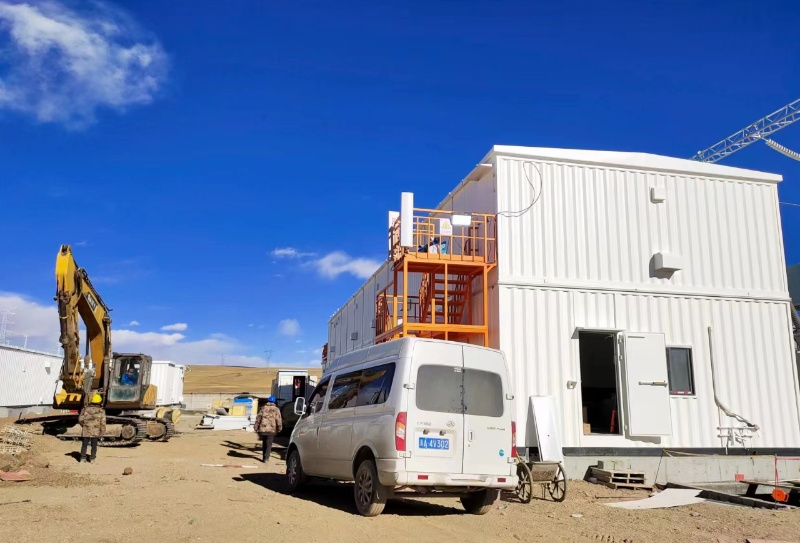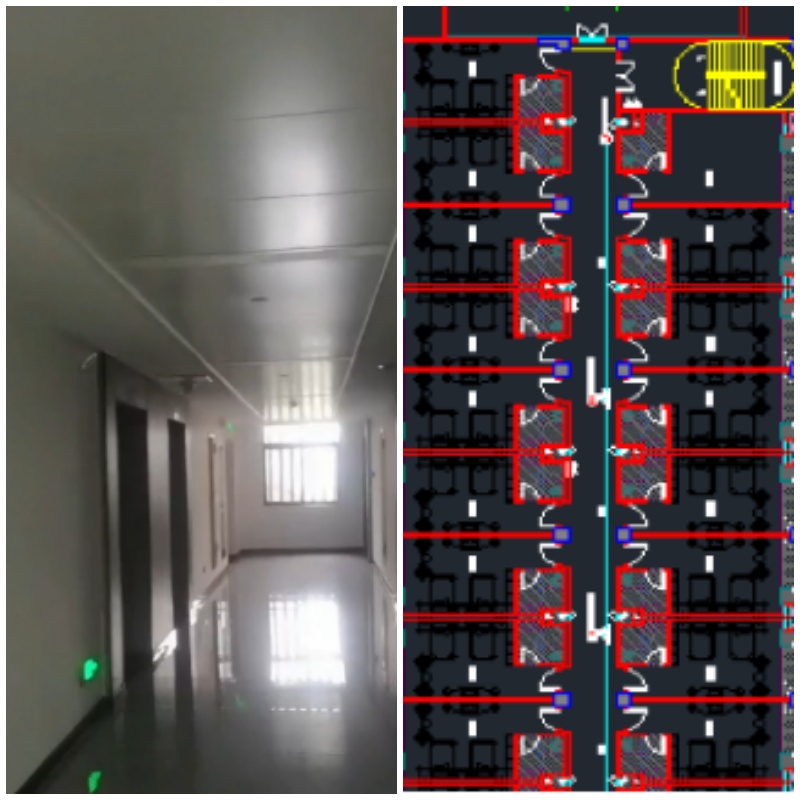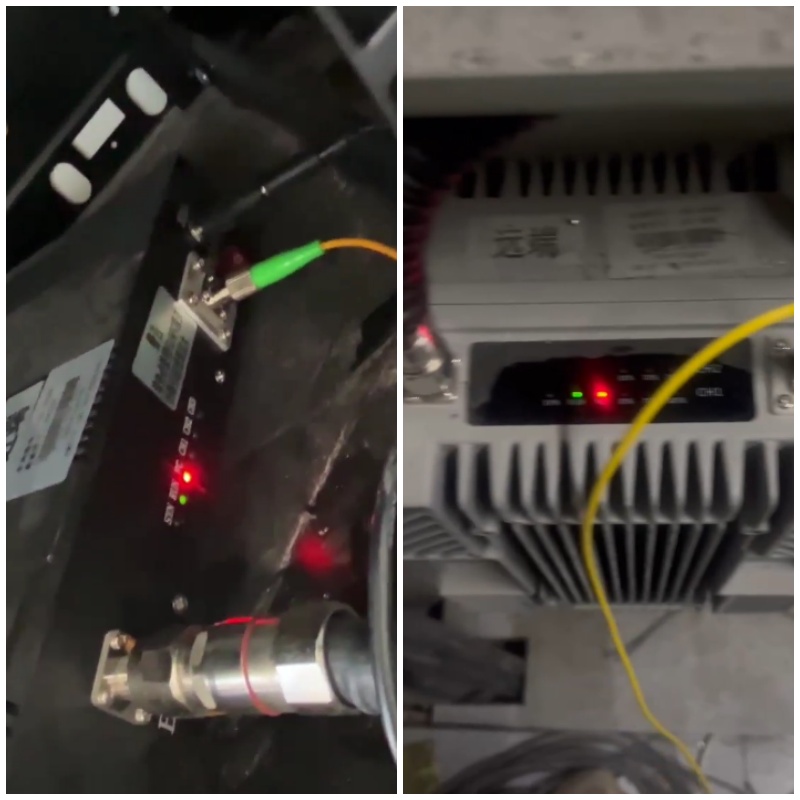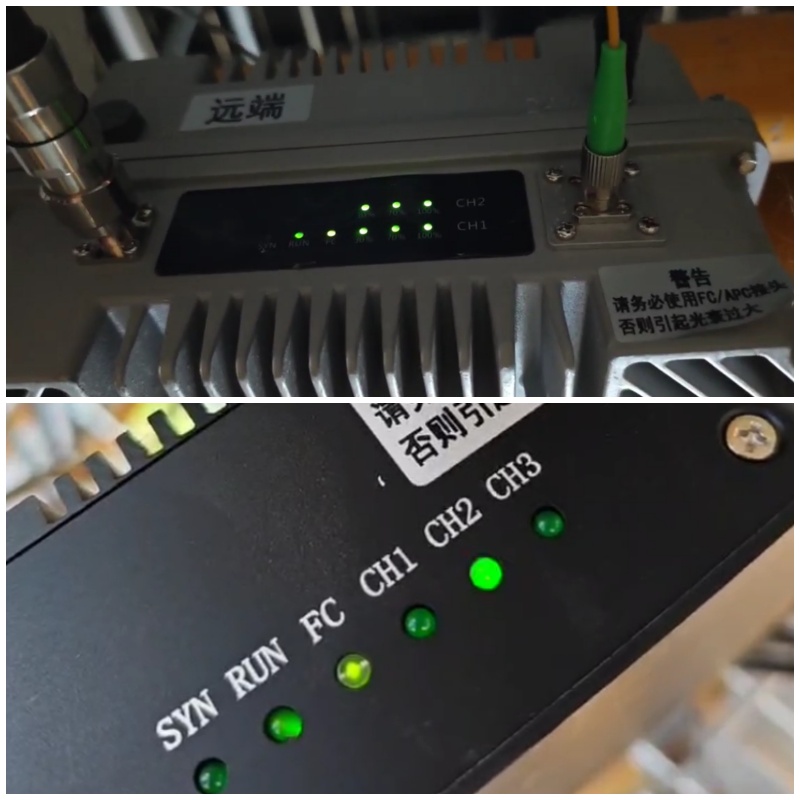Some users face issues when using mobile signal boosters, which prevent the coverage area from delivering the expected results. Below are some typical cases encountered by Lintratek, where readers can identify the reasons behind poor user experience after using commercial mobile signal boosters.
Case 1: Improper Signal Source Selection for High-Rise Building Coverage
Problem Description:
The customer’s coverage area involved a 28-story building, with indoor antennas installed in the corridors. They chose a 20W 4G/5G fiber optic repeater. After installation, the customer reported weak, unstable signals with frequent interruptions in phone calls, leading to dropped calls or no signal in certain areas.
Outdoor Antenna
Solution Process:
Through remote communication with Lintratek’s technical team, it was discovered that the signal reception antenna was placed on the rooftop (28th floor). The high altitude resulted in mixed, unstable signals, with some of the signals possibly being refracted or reflected, which were of poor quality and fluctuated. The team recommended relocating the antenna to the 6th floor of the building’s podium, where a more stable signal could be received. After the adjustment and testing, the coverage area was significantly improved, and the customer was satisfied with the results.
Key Takeaway: Proper selection of the signal source is crucial for high-rise coverage. A good signal source contributes at least 70% to the success of a repeater project.
For high-rise buildings, it is advisable not to install outdoor antennas on the roof, as higher floors tend to receive more chaotic and unstable signals. Choosing the right location for outdoor antennas is critical to achieving the desired results.
Case 2: Weak Signal in Industrial Mobile Signal Booster Application
Problem Description:
The customer, a factory, selected a 3W commercial 4G mobile signal booster. After installation, the coverage area in the factory had weak signals and could not be used effectively. The signal strength near the antennas was below -90 dB, and the signal reception antenna was receiving signals around -97 dB with a negative SINR value (the antenna was about 30 meters from the booster). This indicated that the signal source was weak and of poor quality.
Solution Process:
After discussing with the customer, the team identified a better signal source in the outdoor area, specifically 5G Band 41 and 4G Band 39, with signal strengths around -80 dB. The team recommended switching to a 4G/5G KW35A commercial mobile signal booster. After the replacement, the factory had good mobile signal coverage.
For projects where our engineering team has not visited the site, it is essential to communicate carefully with the customer, ensuring all details are confirmed to maintain professionalism and enhance our company’s reputation.
Case 3: Poor Call Quality and Lag in Fiber Optic Repeater Coverage Area
Problem Description:
The customer, located in a remote rural area, reported poor call quality, call lag, and frequent alarm lights on both the near-end and far-end devices of the 10W fiber optic repeater. The system was using three indoor omnidirectional ceiling antennas and two large outdoor panel antennas covering two directions.
Rural Area Desert
Solution Process:
After discussing with the customer and analyzing the situation, it was suspected that the large outdoor panel antennas might have caused self-oscillation. Despite reducing the gain of the remote equipment, the alarms persisted. The customer was advised to remove one of the panel antennas facing the reception antenna, and after restarting the equipment, the alarm lights went off. The issue was resolved by adjusting the angle of the remaining antenna.
Key Takeaway: When covering both indoor and outdoor areas, it is essential to prevent self-oscillation by ensuring adequate isolation between the transmitting and receiving antennas. Additionally, the repeater’s coverage should not overlap with the signal source’s base station, as this could degrade signal quality and reduce upload/download speeds.
Case 4: Weak Signal in Office Building Coverage Area
Problem Description:
The customer, an office building, used a 20W 4G 5G tri-band fiber optic repeater. The feedback indicated that the signal in the meeting rooms was around -105 dB when the door was closed, making the signal unusable. In other areas, the signal was stronger, around -70 dB.
Mobile Signal Booster for Office
Solution Process:
After discussing with the customer, it was found that the building had thick walls (50-60 cm), which severely blocked the signal, causing a 30 dB loss when doors were closed. In rooms where antennas were placed near the door, the signal strength was around -90 dB. The team suggested adding more antennas to cover a wider area.
Key Takeaway: In dense, multi-room buildings, antenna placement should be closer together to ensure proper coverage. Thick walls and metal doors can block signals significantly, so it’s crucial to design the antenna layout accordingly to meet the customer’s expectations.
Case 5: Incorrect Fiber Optic Cable Leading to Fiber Optic Repeater Malfunction
Problem Description:
The customer used a KW33F-GD simulated fiber optic repeater. However, the customer reported that the alarm lights on both the near-end and far-end devices were constantly on, and there was no mobile signal in the coverage area.
Solution Process:
After remote support, it was discovered that the customer had used the wrong fiber optic cable. Once the correct cable was replaced, the equipment functioned properly.
Key Takeaway: Ensure that the customer uses the correct fiber optic cable for fiber optic repeater systems to avoid operational issues.
Case 6: No Signal Output in Underground Parking Lot
Problem Description:
The customer, working on an underground parking lot project, reported that the signal strength indicator on the near-end device of a 33F-GD fiber optic repeater remained on, but no mobile signal was available in the coverage area. The outdoor reception antenna received good B3 band signals, but no signal was transmitted to the coverage area.
Solution Process:
Through communication with the customer, it was found that the distance between the outdoor reception antenna and the indoor coverage antenna was only about 20 meters vertically, with insufficient horizontal isolation. The team advised the customer to move the outdoor antenna further away, and after this adjustment, the coverage area returned to normal, with mobile signals functioning as expected.
Key Takeaway: Insufficient isolation between antennas can lead to self-oscillation, resulting in no signal output. Adequate antenna placement and isolation are key to ensuring proper signal coverage in complex environments.
Conclusion:
Mobile signal boosters, especially for commercial, industrial, and large-scale applications, can face various challenges due to the unique characteristics of each environment. Lintratek’s technical team emphasizes the importance of selecting the right signal source, carefully designing antenna placement, and ensuring the use of correct equipment to meet customer expectations. By addressing these challenges proactively, we can ensure optimal performance of mobile signal boosters, including fiber optic repeaters, in diverse scenarios.
Lintratek has been a professional manufacturer of mobile signal boosters with equipment integrating R&D, production, and sales for 13 years. Signal coverage products in the field of mobile communications: mobile phone signal boosters, antennas, power splitters, couplers, etc.
Post time: Dec-24-2024








